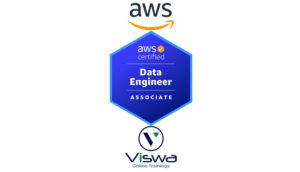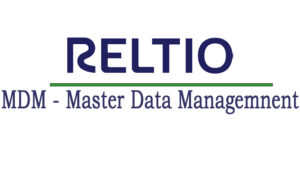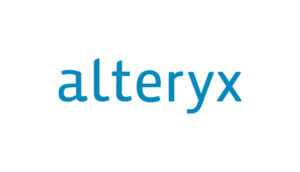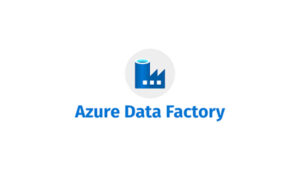Data Modelling Certification Training
One of the top providers of online IT training worldwide is VISWA Online Trainings. To assist beginners and working professionals in achieving their career objectives and taking advantage of our best services, We provide a wide range of courses and online training.
Learners : 1080
Duration : 25 Days
About Course
Methodologies used in our Data Modelling Course are designed to help students understand how to choose, use, and interpret the right statistical designs and analyses for real-world data challenges. Understanding the relationships in the data, theory, and application of linear and non-linear regression models, model-building processes, model diagnostics, and corrective procedures are among the topics covered. Enrol today to earn your certification.
Data Modelling Training Course Syllabus
✔ What is data modeling and its significance?
✔ What is Data Warehousing
✔ Conceptual Data modeling
✔ Physical Data modeling
✔ Logical Data modeling
✔ Benefits and scope of data modeling
✔ Basic Conceptual Architecture
✔ Demonstrate fact and dimension
✔ Difference between facts and dimensions
✔ Evolution of RDBMS
✔ RDMS providers
✔ Parts of database
✔ Relational concepts
✔ OLTP vs. OLAP
✔ What is ETL Process
✔ Where ETL Process is used
✔ Scope of ETL in Data warehouse
✔ Topics for Erwin Tool
✔ Introduction to Erwin Tool
✔ Installation and configuration of erwin and Notation
✔ Creation of Entities and attributes
✔ Creation of Relationship
✔ Understanding constraints (PK, FK) in Erwin tool
✔ Creation of Domains, Default Values, Validation rules
✔ Creating Diagrams
✔ Creating Conceptual model
✔ Creating Logical model
✔ Creating Physical model
✔ Creating Subject area model
✔ Generating Scripts from Physical Model
✔ Building reports and Printing in erwin
✔ Forward Engineering
✔ Reverse Engineering
✔ Complete compare of models/schem
| Live Instructor Based Training With Software |
| Lifetime access and 24×7 support |
| Certification Oriented content |
| Hands-On complete Real-time training |
| Get a certificate on course completion |
| Flexible Schedules |
| Live Recorded Videos Access |
| Study Material Provided |
Data Modelling Training - Upcoming Batches
7th NOV 2022
8 AM IST
Coming Soon
AM IST
5th NOV 2022
8 AM IST
Coming Soon
AM IST
Don't find suitable time ?
CHOOSE YOUR OWN COMFORTABLE LEARNING EXPERIENCE
Live Virtual Training
-
Schedule your sessions at your comfortable timings.
-
Instructor-led training, Real-time projects
-
Certification Guidance.
Self-Paced Learning
-
Complete set of live-online training sessions recorded videos.
-
Learn technology at your own pace.
-
Get access for lifetime.
Corporate Training
-
Learn As A Full Day Schedule With Discussions, Exercises,
-
Practical Use Cases
-
Design Your Own Syllabus Based
Data Modelling Training FAQ'S
Data modelling is the diagrammatic description of the relationships between the various components. It is the first phase in the database design process. The conceptual model is built initially, followed by the logical model and then the physical model.
Typically, the software development life cycle’s data analysis and design phase is when data models are created.
There are three types of data models – conceptual, logical, and physical. The level of complexity and detail increases from conceptual to logical to a physical data model.
The conceptual model shows a very basic high level of design while the physical data model shows a very detailed view of design.
- The conceptual model will just portray entity names and entity relationships. Figure 1 shown in the later part of this article depicts a conceptual model.
- The Logical Model will be showing up entity names, entity relationships, attributes, primary keys, and foreign keys in each entity. Figure 2 shown in question#4 in this article depicts a logical model.
- The physical Data Model will be showing primary keys, foreign keys, table names, column names, and column data types. This view actually elaborates on how the model will be actually implemented in the database.
Get ahead in your career by learning Data Modelling through VISWA Online Trainings
Facts represent quantitative data.
For Example, the net amount due is a fact. A fact table contains numerical data and foreign keys from related dimensional tables. An example of the fact table can be seen from Figure 2 shown above.
OLTP stands for the Online Transaction Processing System & OLAP stands for the Online Analytical Processing System. OLTP maintains the transactional data of the business & is highly normalized generally. On the contrary, OLAP is for analysis and reporting purposes & it is in de-normalized form.
This difference between OLAP and OLTP also gives you the way to choosing the design of schema. If your system is OLTP, you should go with star schema design and if your system is OLAP, you should go with snowflake schema.
Reviews
 Vishnu Gadipudi2023-08-20I Enrolled in VISWA Online Trainings for IBM Integration BUS course . Recently I Completed IBM Integration BUS Batch. It was Really Awesome Experience. Best Place To Learn , Experienced Trainer, Gives Us High Level Knowledge....
Vishnu Gadipudi2023-08-20I Enrolled in VISWA Online Trainings for IBM Integration BUS course . Recently I Completed IBM Integration BUS Batch. It was Really Awesome Experience. Best Place To Learn , Experienced Trainer, Gives Us High Level Knowledge.... Navya Biradavolu2023-08-20I was enrolled for looker Bl Tool,it was amazing experience . especially soft skill batch is one of my favourite batch . overall learning process is quite impressive.
Navya Biradavolu2023-08-20I was enrolled for looker Bl Tool,it was amazing experience . especially soft skill batch is one of my favourite batch . overall learning process is quite impressive. Indla sneha2023-08-20I have joined I have joined VISWA Online TRAININGS for Java full stack course and i have completed Advance Java module. I had a good knowledge of Hibernate, spring,spring boot,spring MVC. Tutor has knowledge in depth and is supportive. Srinadh sir solved all our doubts....
Indla sneha2023-08-20I have joined I have joined VISWA Online TRAININGS for Java full stack course and i have completed Advance Java module. I had a good knowledge of Hibernate, spring,spring boot,spring MVC. Tutor has knowledge in depth and is supportive. Srinadh sir solved all our doubts.... bindu hima2023-08-20I am recently completed Talend course and trainer is Rajendra very professional and helpful. All the doubts were solved in a precise manner.
bindu hima2023-08-20I am recently completed Talend course and trainer is Rajendra very professional and helpful. All the doubts were solved in a precise manner. Tarunasree Gowra2023-08-20"I truly enjoyed this course." Chaitanya sir fantastic-very knowledgeable. Sir give us very informative and clear instruction on how to achieve the goal. Thank you!
Tarunasree Gowra2023-08-20"I truly enjoyed this course." Chaitanya sir fantastic-very knowledgeable. Sir give us very informative and clear instruction on how to achieve the goal. Thank you! Tejaswini Kommu2023-08-20Overall Linux Admin sessions batch was very good. Mr. RAM Krishna teaching was very helpful to remind our basic concepts in linux & networking.
Tejaswini Kommu2023-08-20Overall Linux Admin sessions batch was very good. Mr. RAM Krishna teaching was very helpful to remind our basic concepts in linux & networking. Gopanaboina Mounika2023-08-20It was great learning with such a great and experienced staff. Praveen Sir (Oracle EPM Cloud - FCCS) was very helpful and operations team also very helpful in solving any minor problems students go through process.
Gopanaboina Mounika2023-08-20It was great learning with such a great and experienced staff. Praveen Sir (Oracle EPM Cloud - FCCS) was very helpful and operations team also very helpful in solving any minor problems students go through process. Jyothi Gutlapalli2023-08-20I like to share my experience which provide lots of courses and one of those I recently completed my Salesforce BA Course and I like to tell you it was a great experience and my knowledge and confidence is really boosted after completing this course.
Jyothi Gutlapalli2023-08-20I like to share my experience which provide lots of courses and one of those I recently completed my Salesforce BA Course and I like to tell you it was a great experience and my knowledge and confidence is really boosted after completing this course. Harshibandi2023-08-20Good experience and great learning platform for Hyperion Essbase and Planning. The faculty is also well trained and soft spoken.
Harshibandi2023-08-20Good experience and great learning platform for Hyperion Essbase and Planning. The faculty is also well trained and soft spoken. Chaitu Viswa2023-08-20It was very good session for QlikView. I would like to thank to teacher Mr.Chandu for providing guidance for the required modules. Thanks VISWA Team for giving apportunity to leran new skills.
Chaitu Viswa2023-08-20It was very good session for QlikView. I would like to thank to teacher Mr.Chandu for providing guidance for the required modules. Thanks VISWA Team for giving apportunity to leran new skills.




